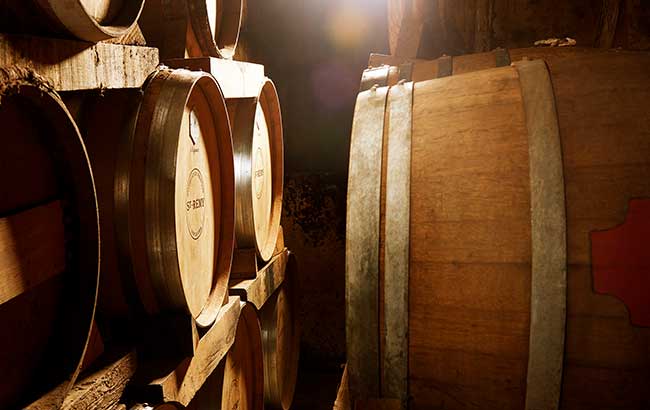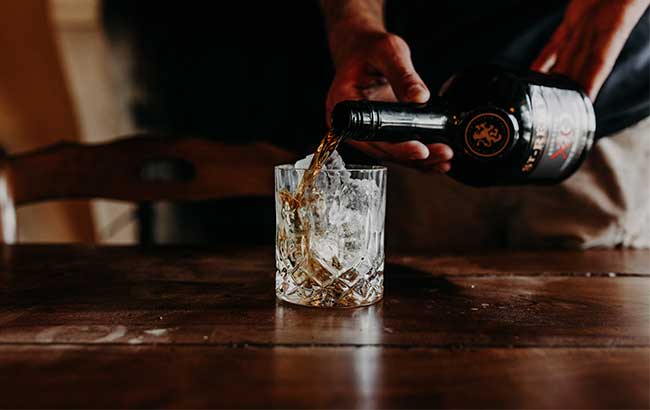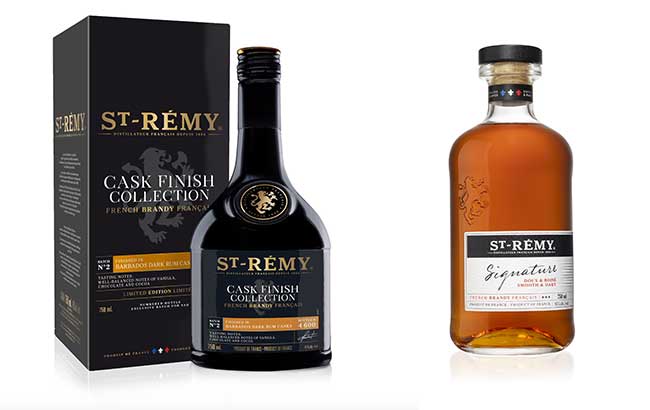Brandy: capturing a new audience
Producers worldwide are hoping to kickstart a new love affair between brandy and consumers by using flavours and innovating the venerable liquid.

“I usually ask the bartenders I’m training ‘who drinks brandy?’ And it’s always the same two answers. Old white men, or rappers,” says Joel Fraser, chief operating officer of rule-breaking new brand Seven Tails Brandy.
He’s right. The fact is, brandy has a problem.
Put succinctly by David Warter, E&J Gallo’s vice-president of distilling: “Currently, the two main barriers to entry are that consumers don’t know what brandy is. And they don’t connect with the historical perception of brandy, which they view as stiff or unattainable.”
And that’s the brandy conundrum. It’s a spirit with a rich heritage, quality, premium liquids, big-name producers and, crucially, when it comes to cocktails, versatility.
And sales-wise, it’s hardly an underperformer.
Yet it’s deeply misunderstood, skews overwhelmingly male, is arguably overshadowed by its flashier counterparts and, according to a new wave of brands and producers, it’s all too often viewed as fusty, old-fashioned and, dare we say it, dull.
Against a backdrop of rapid innovation in spirits, from flavour to branding, brandy as a whole has been left behind; some areas of the category more than others. Until now.
Though sales – traditionally bolstered by high performance in travel retail – were severely dented in 2020 as the pandemic took hold, the past 12 months have seen brandy strongly rebound in certain parts of the category.
For example, brandy’s sister spirit, Cognac, saw sales leap by nearly a third in value (31%) to €3.6 billion (US$4.1bn) in 2021, according to industry group the Bureau National Interprofessionnel du Cognac (BNIC).
Market analysis firm Technavio forecasts a 2% compound annual growth rate (CAGR) for Cognac until 2025, while the BNIC says it plans to ship 350 million bottles per year by 2035, up from 230m currently.
Apple-based French brandy Calvados experienced double-digit sales growth in 2021. Its sales rose by 14.2% in 2021, after 4.8 million bottles were sold, with the Interprofessional Association of Cider-Based Controlled Appellations (IDAC) noting that Belgium (up by 30%), Sweden (up by 31%), and the US (up by 70%) were particularly strong markets.
For grape brandy – a sector that has hitherto failed to modernise – however, things are not looking quite as strong.
The market is trailing spirits as a whole when it comes to growth, rising by just 1.7% in value over the past five years, compared with 5.5% for total spirits.
Volume has fallen by 3.8% over the same period, compared with 2.9% for total spirits, showing that premium products are still driving the market. That has left a notable gap, which a number of brands are starting to exploit.

The modern era
From flavoured varietals to hybrid liquids, and concerted cocktail-driven campaigns, a new flourish of activity by producers old and new is looking to launch brandy into the modern era and, crucially, put it on the radar of a new legion of drinkers.
An image revamp and a shift of the narrative surrounding the category is being looked at as the key to making brandy modern and relevant.
“We are just at the very beginning of what I would call the brandy revolution,” says Bardinet’s international group brand manager, Laure Habbouse.
Though founded in 1857, the brand is one of the first to take the route trodden by many other categories to lure new drinkers – flavour. It is hoping to reach a younger demographic through the launch of its coffee-flavoured variant, with a flavour profile new consumers already understand.
Offered at 28%% ABV, Bardinet Coffee can be drunk over ice, in long drinks, and cocktails. It is the first launch in the new Bardinet Flavours collection, though the brand is tight-lipped on what will come next, and when.
It also launched a more premium product, Bardinet Single Distillery.
“Brandy used to be the poor guy in the spirits category,” adds Habbouse. “We did some studies in the UK and Australia, and found our average consumer is around 60 years old. That’s true for brandy in general. For us, our regular brandy drinker is an older man who drinks it as a treat.
“But we’ve seen categories like whisky, that used to be very male, move quite drastically where today you see a lot of women there; female bartenders, female drinkers. I’m sure brandy will take the same path. We’ve tried to develop the category to recruit new consumers, but also elevate the brand with more premium products.
“Coffee was one of the biggest trends we identified. It’s really a question of communication, as the quality is there, but consumers don’t know about it.”
It’s worth noting that perceptions of the category vary wildly around the world.
Habbouse points to one of its biggest markets, the Middle East, a market where brandy is not only embraced by younger consumers, but where they’re already adopting more varied, lighter, refreshing serves, such as long with sparkling water.
Changing perceptions and attracting a younger crowd to the category is the modus operandi of newcomer Seven Tails.
Launched in early 2020, it claims its liquid is a world-first blend of Cognac, Armagnac and French brandies aged between five to 30 years, finished in Port wine casks.
Its strategy to win hearts and minds is “to position Seven Tails as the go-to cocktail brandy”, says Fraser, placing it firmly on the radar of discerning young drinkers through placement in some of the world’s best bars.
So far it has achieved listings in venues including Attaboy and Dante in New York, Atlas in Singapore, Zuma in Dubai, and is available in markets including the US, the UK, Singapore, China, France, Spain, Poland, Italy and Germany.
Soon it will enter Finland, Norway, Sweden and Canada.
“Brandy is one of the largest categories in the world, much bigger than gin. Yet no one is sticking their hand up and saying, ‘we make the world’s best brandy’. We saw a gap in the market and tried to fill it,” says Fraser.
The brand is ditching balloon glasses and pushing convention-defying serves.
And at Seven Tails’ cocktail competition held at London’s The Ned in March, its stipulation to competitors was that the finished drink couldn’t be brown. From its packaging, which is more reminiscent of a craft gin or rum, to its mid-level £35 (US$43.56) price point, the brand is targeting non-brandy consumers, non-brandy occasions and non-brandy serves.
The lack of activity in the category hitherto is an opportunity, says Fraser, not a hindrance.
“Brandy has always had a massive part to play in cocktails, and we’re pushing that agenda,” he adds. “The world’s best brandy is always going to make the world’s best Sidecar. That’s not the point; let’s get innovative. So why don’t we put Seven Tails in an Espresso Martini? Why don’t we put it in a Clover Club and use it in a way that breaks the barriers of how brandy is perceived in the cocktail world.”
Coffee and cocktails are emerging as brandy’s top weapon to entice these much coveted new consumers.
St-Rémy Brandy has focused its innovation on premium barrel-aged offerings.
In October, it added two products to its limited edition Cask Finish Collection, with a Sauternes wine cask finish and the second batch of its Barbados dark rum cask finish.
First launched in 2018, other editions have used French Chardonnay, Scotch, and oloroso Sherry casks.

A regular tipple
It too is working to dust off brandy from a top-shelf drink for treat occasions, to something to sip regularly.
The launch of St-Rémy Signature two years ago in Canada, aimed to recruit new 30- to 40-year-old drinkers through its Bourbon and rum-esque packaging, its simple name and a smooth, easy-to-mix liquid.
It added the US and Australia in 2021 and is set to roll out to New Zealand, the UK, Taiwan and the Caribbean.
“It’s really a priority for us to attract a new audience,” says Hervé Buzon, international marketing director for St-Rémy Brandy. “Younger consumers love to discover and explore, and maybe don’t have the same barriers as their parents. St-Rémy Signature is a good way to connect with a new audience.
“But this product really has two goals. The second is to attract the bartender community with a product that is easier to mix. [In the markets it’s launched] we can see the start of momentum. In some markets the image of brandy is already changing.”
The company has also launched St-Rémy Café, a campaign to champion a new way of consuming its hero product, St-Rémy XO, through a collection of cocktails that expand on the tradition of combining brandy with coffee.
The objective is to open up brunch as a key occasion for the brand.
Yet there is more education work to be done, especially when it comes to building awareness of the different types of brandy available, and their nuances.
In September, Californian wine producer E&J Gallo launched its Single Barrel Pinot Noir brandy, double distilled in Prulho Charentais pot stills in 2001 and aged for 19 years in heirloom Limousin oak barrels, under its Germain-Robin brand, available exclusively at California Brandy House in Napa, followed by a limited release to select markets.
“California brandy isn’t something that the masses are onto just yet,” says David Warter, vice-president of distilling, saying the brand has attracted curious brown spirits drinkers, who consume it in cocktails, and drink it from any glassware they like.
“The use of California grapes complemented by the oak is what makes California brandy special. We don’t have to rely on barrel finishing to give our product fruit characteristics. They are there naturally. Thus, our product will always focus on the flavours from grapes.”
Seven Tails, however, is now set to make a more overt play for rum drinkers, with the launch of a spiced variant.
It will launch first in the UK, and unlike the brand’s flagship product it will use a 100% brandy base, spiced with coffee bean, vanilla and a hint of almond.
Without the Cognac and Armagnac, it will also purposefully be offered at a cheaper, more accessible price point. “We’re bringing to market the world’s first spiced brandy,” says Fraser, “taking inspiration from the boom in spiced rum. It’s for spiced rum drinkers more than brandy drinkers. This is an easy way for someone who wants to grab a bottle of ginger beer, Coke or pineapple juice, and make simple cocktails at home.
“People are looking for innovation in spirits. Unfortunately for Cognac, the best thing they can do is put a splash of colour on a label, and coo over the innovative packaging. Because we can innovate, we thought we really should.”
Related news
Cocktail stories: Speed Bump, Byrdi
